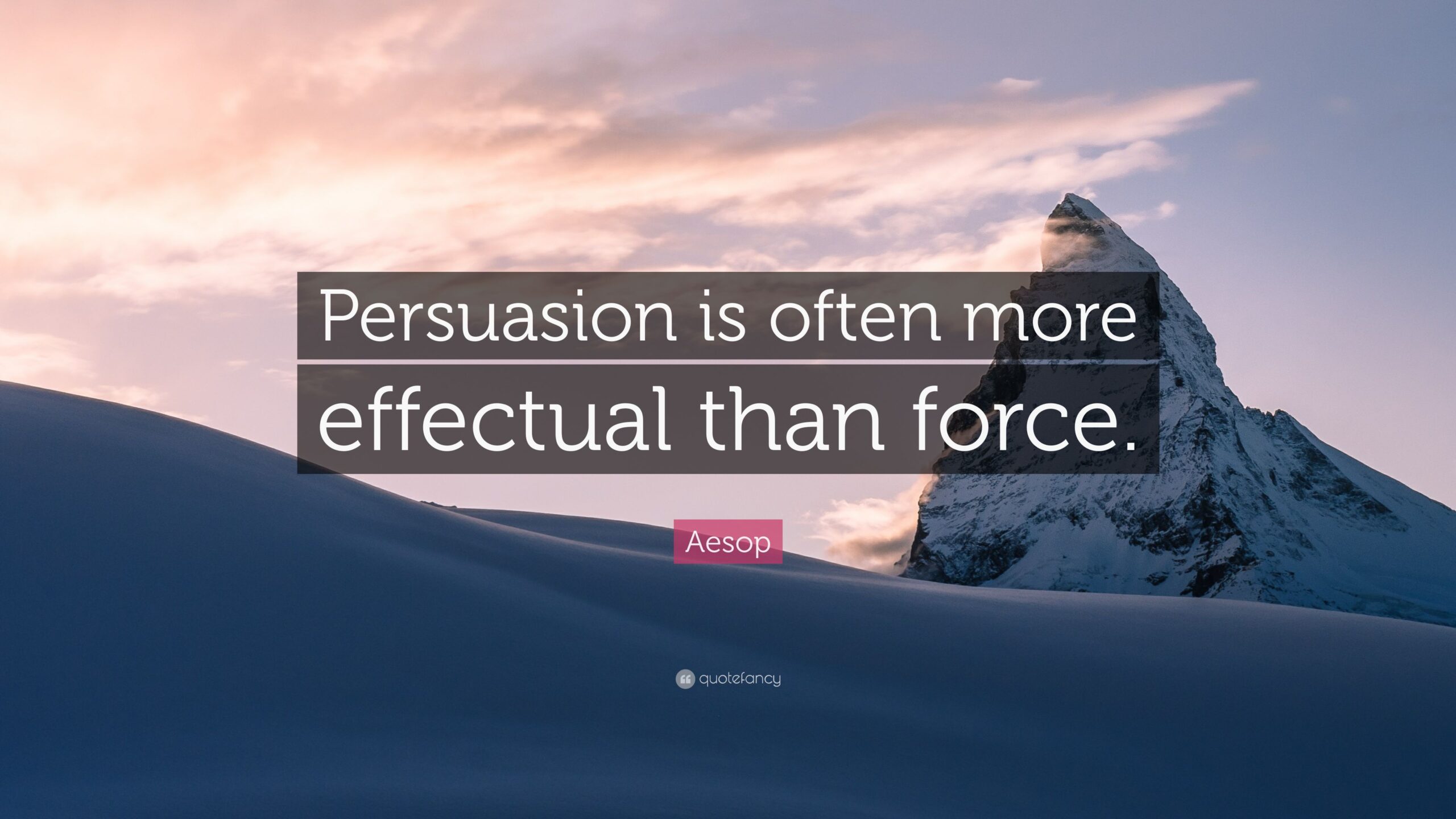Persuasion is often more effectual than force

Persuasion is a powerful instrument in human interaction, a gentle art of influence that echoes through the ages. This sophisticated tool of communication has its roots in ancient civilizations, where eloquent speakers, such as Greek rhetoricians and Roman orators, utilized the power of persuasive speech to sway audiences and shape societies.
At its core, persuasion is about influencing others’ thoughts, emotions, and actions without resorting to coercive means. It is the glue that holds social dynamics together, allowing us to navigate complex interactions and facilitating cooperation among individuals and groups.
Force versus Persuasion: A Comparative Analysis
Force, in contrast, represents a more primal, yet less refined method of influence. It revolves around compulsion and domination, often culminating in physical or psychological pressure. While effective in the short-term, force tends to engender resistance, leading to conflict and alienation in the long run.
The chasm between force and persuasion lies in the nature of their impacts: while force imposes, persuasion inspires. Persuasion fosters a sense of shared purpose and mutual agreement, as opposed to the resentment and opposition frequently engendered by force.
The Psychology of Persuasion
Delving into the psychology of persuasion reveals a complex interplay of emotion and cognition. It is an intricate dance between the persuader and the persuaded, guided by universal principles such as reciprocity, social proof, and likability.
Emotions play a pivotal role in persuasion, often acting as the catalyst for decision-making. Cognitive aspects, on the other hand, provide rational substantiation to the emotional appeals, further bolstering the persuasiveness of the argument.
Applications of Persuasion in Everyday Life
Persuasion permeates our daily lives, whether in subtle, interpersonal negotiations or on larger stages such as business and politics. In interpersonal relationships, persuasive communication can help manage conflicts, strengthen bonds, and foster mutual understanding.
In the arenas of business and politics, persuasion emerges as a vital tool. Business leaders use it to inspire teams, negotiate deals, and attract customers. Politicians wield it to win elections, advocate for policies, and unite their constituencies.
Effective Techniques for Persuasive Communication
Mastering persuasive communication often involves an understanding of rhetorical persuasion, a field of study that dates back to Aristotle. Rhetorical techniques, such as the use of ethos, pathos, and logos, remain as relevant today as they were in ancient times.
Additionally, storytelling and narrative persuasion have emerged as powerful techniques in the contemporary world. A compelling story not only captivates audiences but also establishes an emotional connection, making the message more memorable and impactful.
Conclusion: Embracing Persuasion over Force
The enduring value of persuasion over force lies in its capacity to foster mutual respect, promote cooperation, and facilitate sustainable change. The effectiveness of persuasion extends beyond immediate outcomes, contributing to long-term relationships and positive social dynamics. This distinction positions persuasion as a more sustainable and benevolent form of influence, one that respects individual agency and promotes shared understanding.
Future trends in persuasion are likely to emphasize even more the role of empathy, active listening, and ethical consideration in persuasive communication. As our world becomes increasingly interconnected, the ability to persuade effectively, fairly, and respectfully will be of paramount importance.






